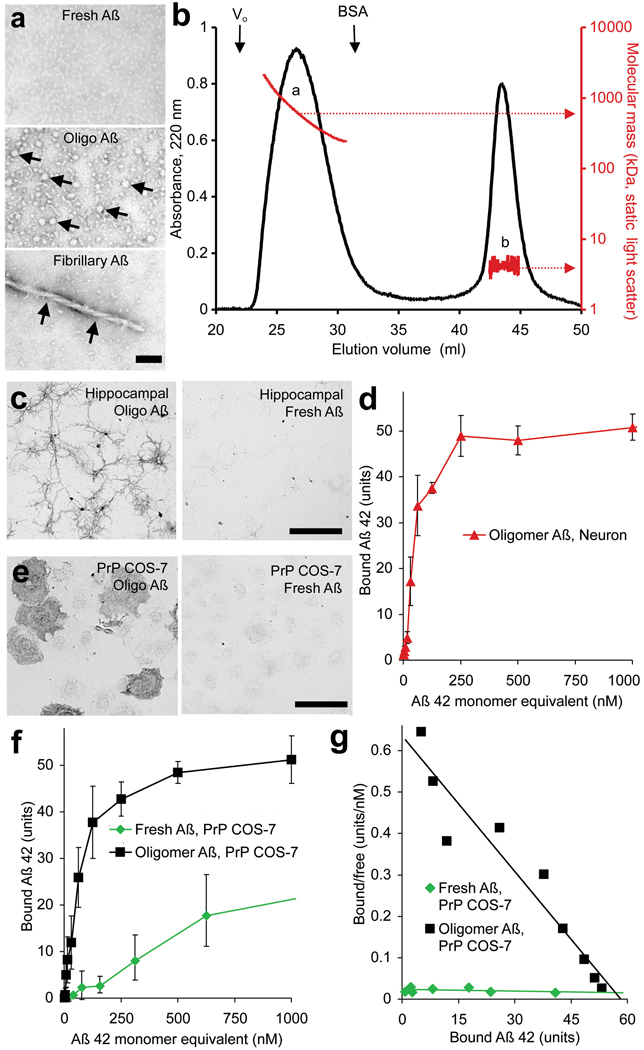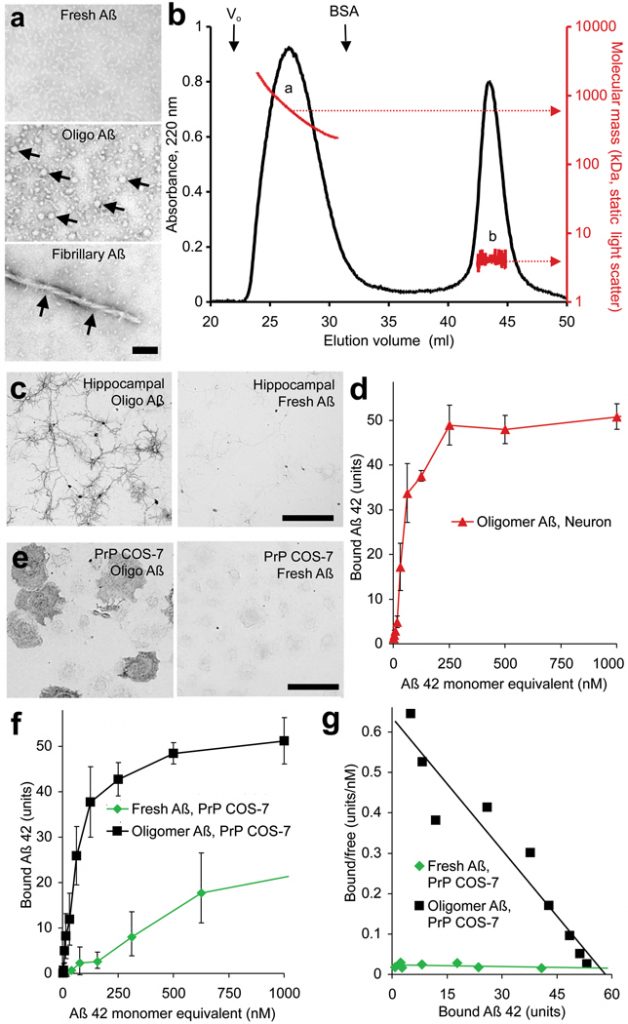
Cellular prion protein mediates impairment of synaptic plasticity by amyloid-beta oligomers.
A pathological hallmark of Alzheimer’s illness is an accumulation of insoluble plaque containing the amyloid-beta peptide of 40-42 amino acid residues. Prefibrillar, soluble oligomers of amyloid-beta have been acknowledged to be early and key intermediates in Alzheimer’s-disease-related synaptic dysfunction.
At nanomolar concentrations, soluble amyloid-beta oligomers block hippocampal long-term potentiation, trigger dendritic backbone retraction from pyramidal cells and impair rodent spatial reminiscence.
Soluble amyloid-beta oligomers have been ready from chemical syntheses, transfected cell tradition supernatants, transgenic mouse mind and human Alzheimer’s illness mind. Together, these knowledge indicate a high-affinity cell-surface receptor for soluble amyloid-beta oligomers on neurons-one that’s central to the pathophysiological course of in Alzheimer’s illness.
Here we establish the mobile prion protein (PrP(C)) as an amyloid-beta-oligomer receptor by expression cloning.
Amyloid-beta oligomers bind with nanomolar affinity to PrP(C), however the interplay doesn’t require the infectious PrP(Sc) conformation. Synaptic responsiveness in hippocampal slices from younger grownup PrP null mice is regular, however the amyloid-beta oligomer blockade of long-term potentiation is absent.
Anti-PrP antibodies forestall amyloid-beta-oligomer binding to PrP(C) and rescue synaptic plasticity in hippocampal slices from oligomeric amyloid-beta.
Thus, PrP(C) is a mediator of amyloid-beta-oligomer-induced synaptic dysfunction, and PrP(C)-specific prescription drugs might have therapeutic potential for Alzheimer’s illness.

Genome sequencing and evaluation of the biomass-degrading fungus Trichoderma reesei (syn. Hypocrea jecorina).
Trichoderma reesei is the primary industrial supply of cellulases and hemicellulases used to depolymerize biomass to easy sugars which can be transformed to chemical intermediates and biofuels, reminiscent of ethanol. We assembled 89 scaffolds (units of ordered and oriented contigs) to generate 34 Mbp of almost contiguous T. reesei genome sequence comprising 9,129 predicted gene fashions.
Unexpectedly, contemplating the economic utility and effectiveness of the carbohydrate-active enzymes of T. reesei, its genome encodes fewer cellulases and hemicellulases than some other sequenced fungus in a position to hydrolyze plant cell wall polysaccharides.
Many T. reesei genes encoding carbohydrate-active enzymes are distributed nonrandomly in clusters that lie between areas of synteny with different Sordariomycetes.
Numerous genes encoding biosynthetic pathways for secondary metabolites might promote survival of T. reesei in its aggressive soil habitat, however genome evaluation supplied little mechanistic perception into its extraordinary capability for protein secretion.
Our evaluation, coupled with the genome sequence knowledge, gives a roadmap for setting up enhanced T. reesei strains for industrial purposes reminiscent of biofuel manufacturing.
